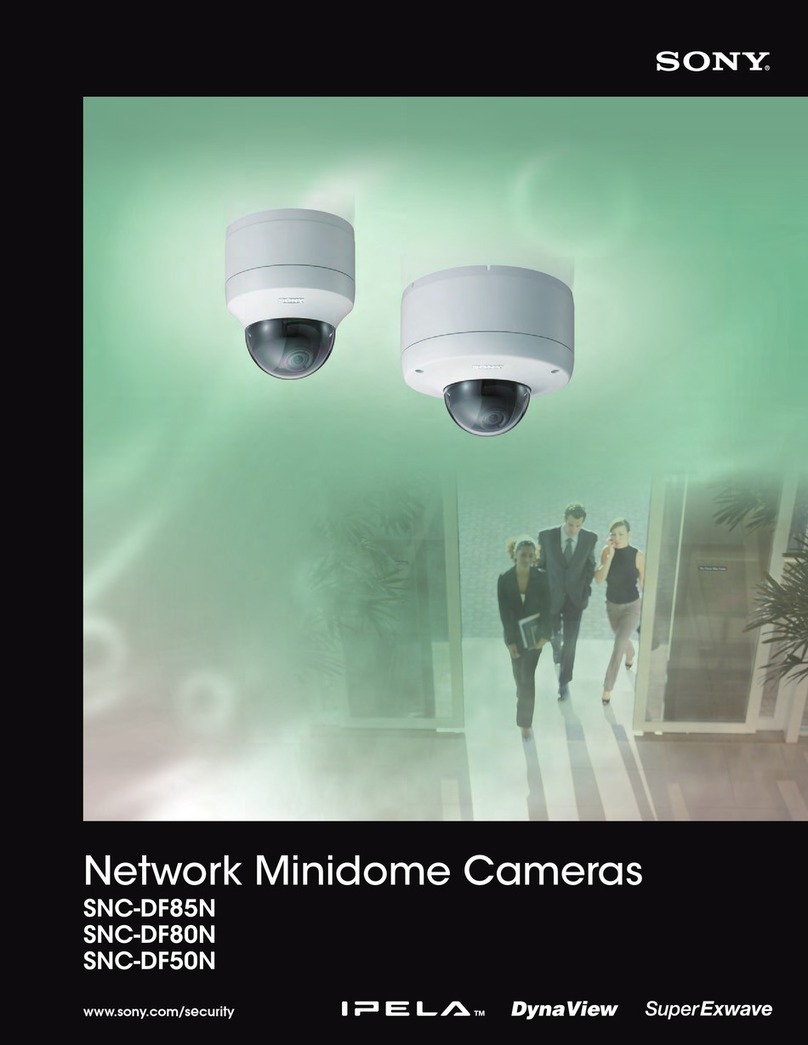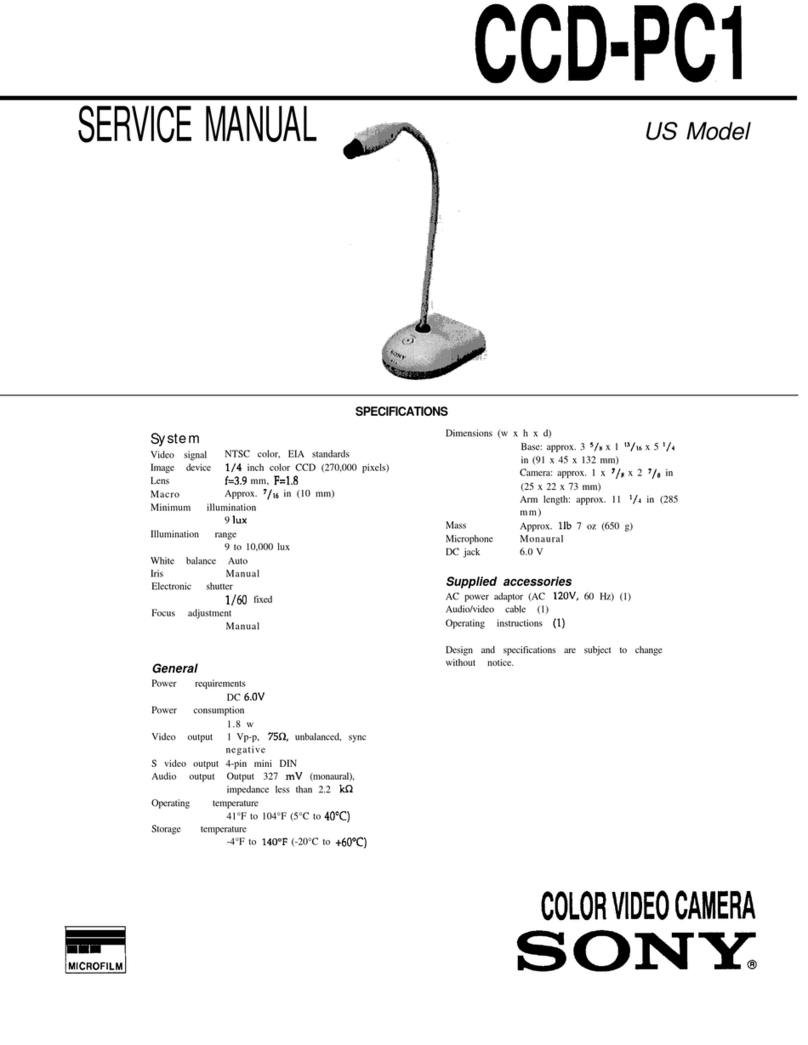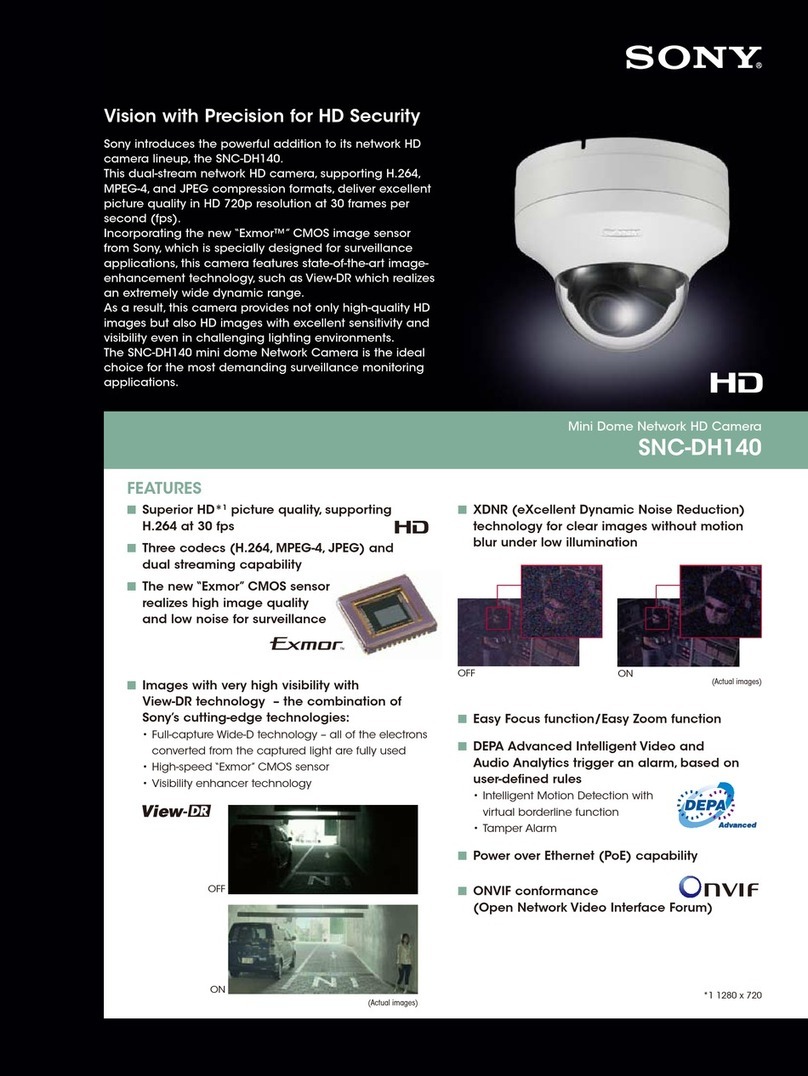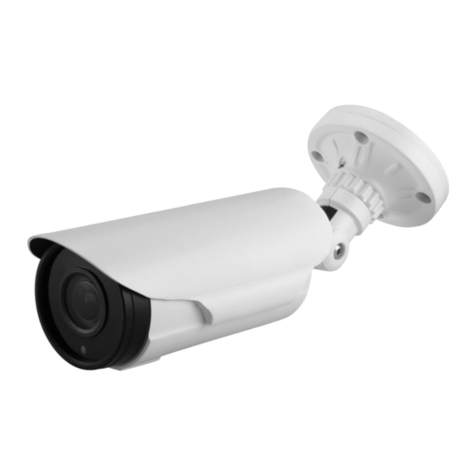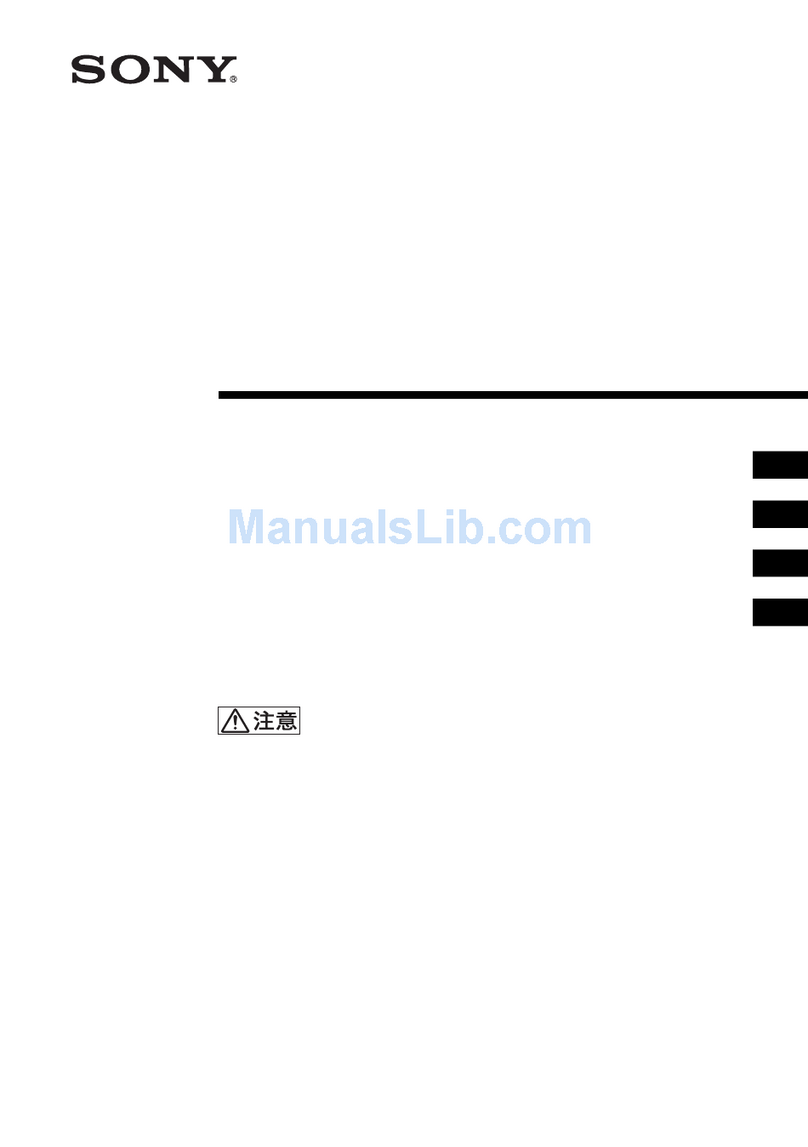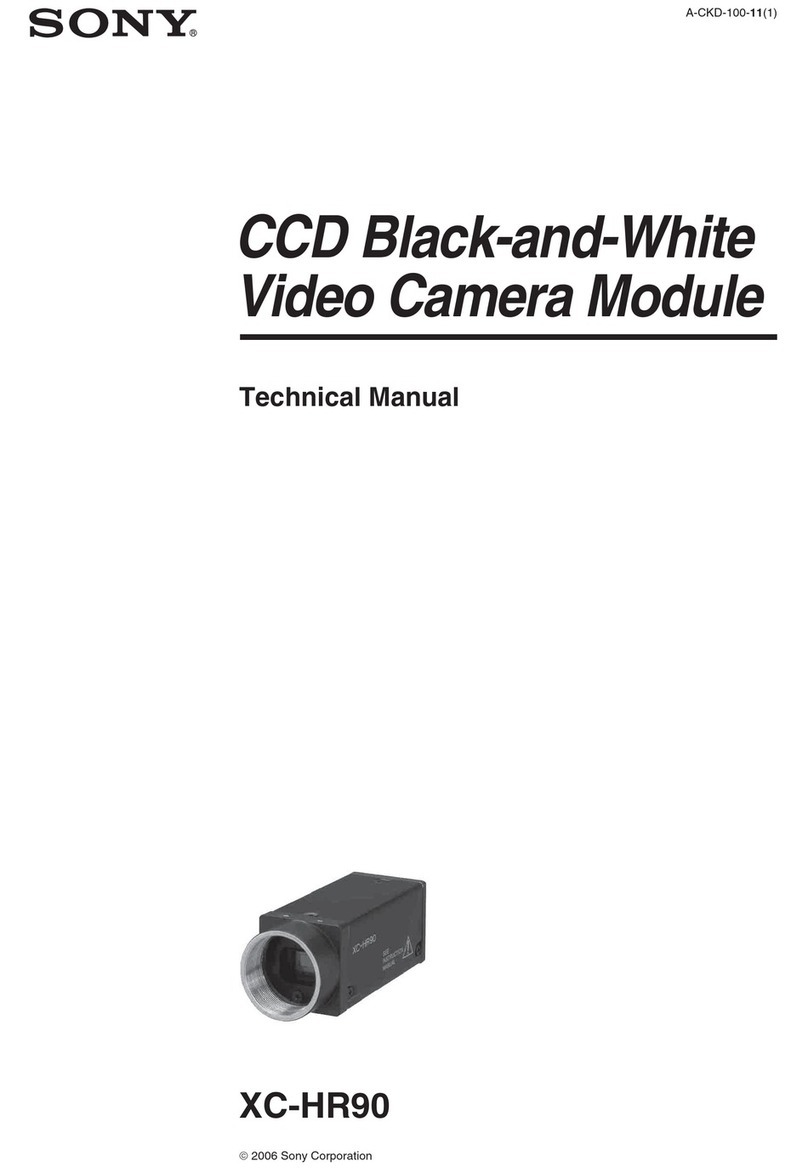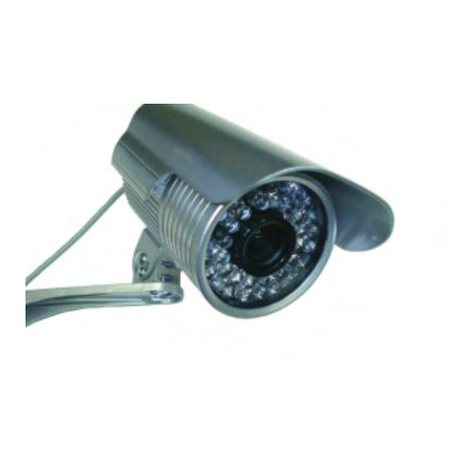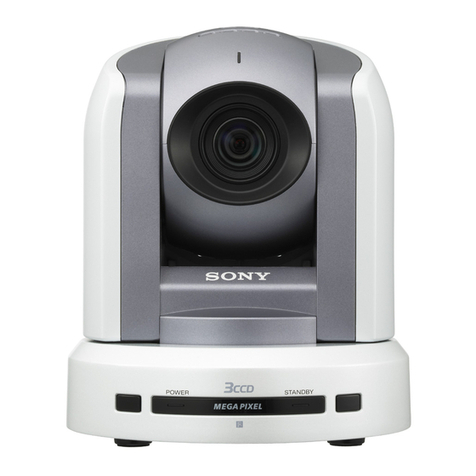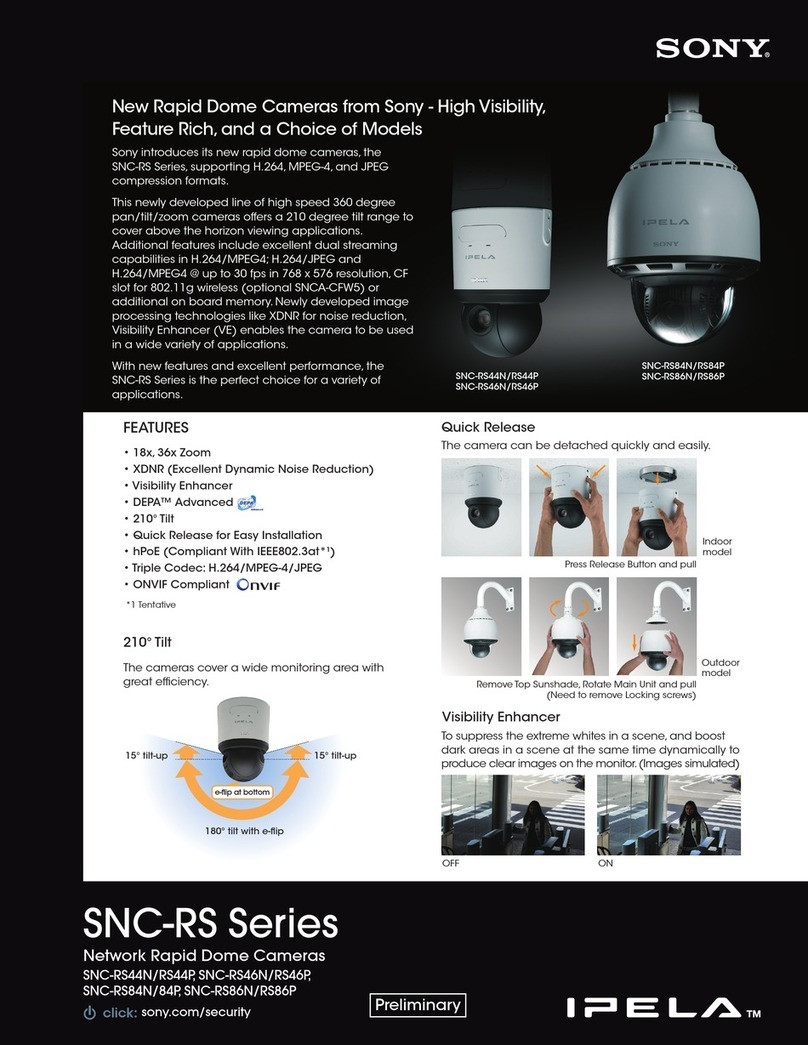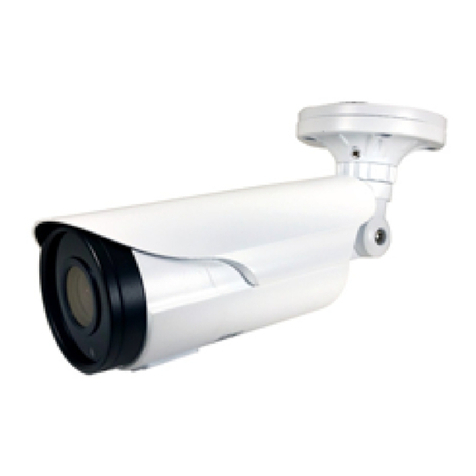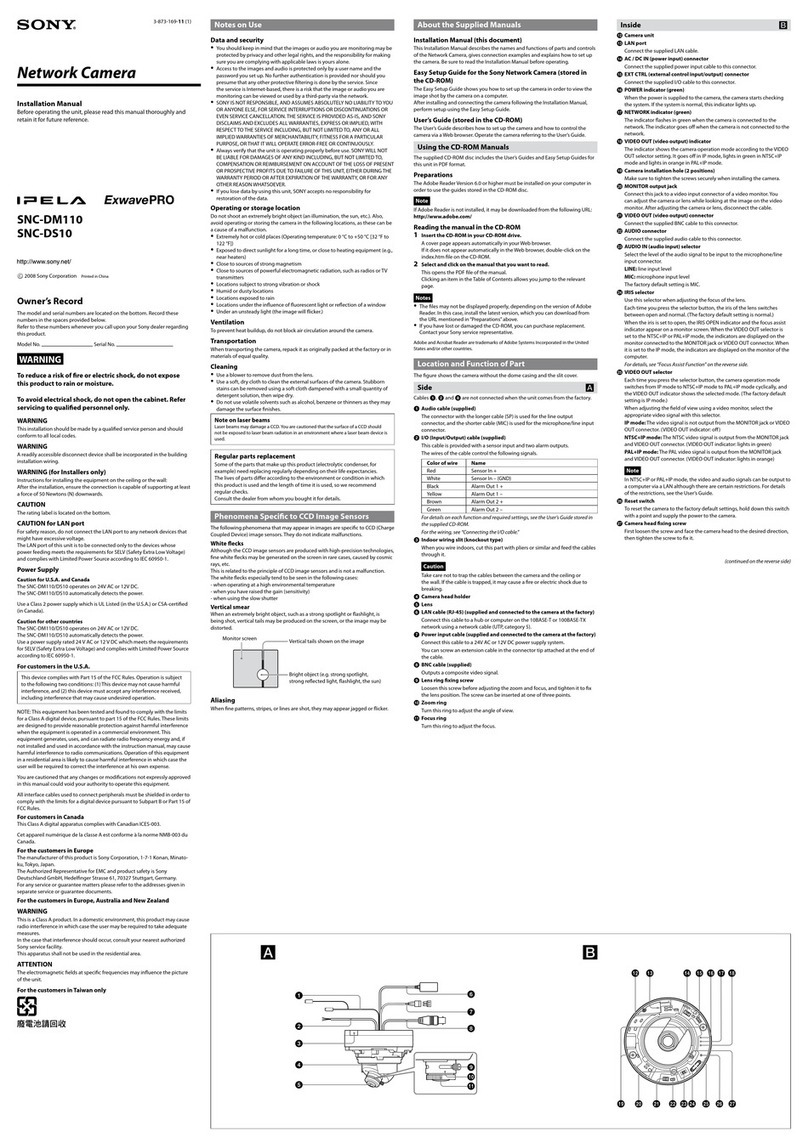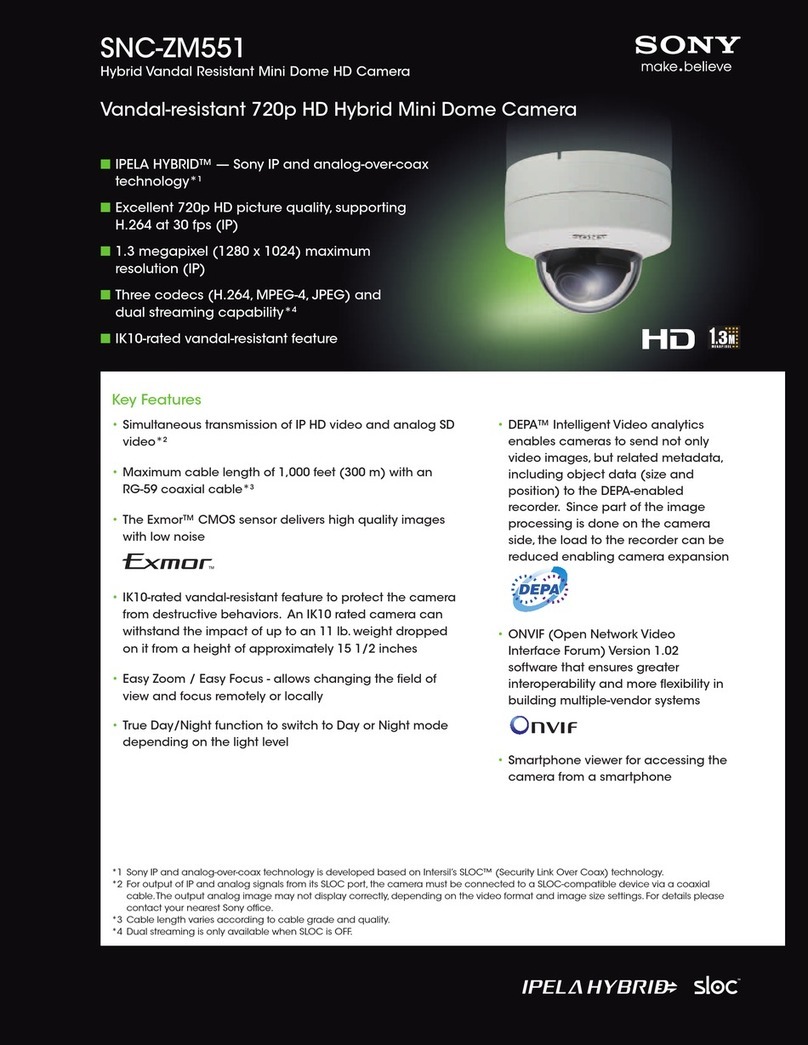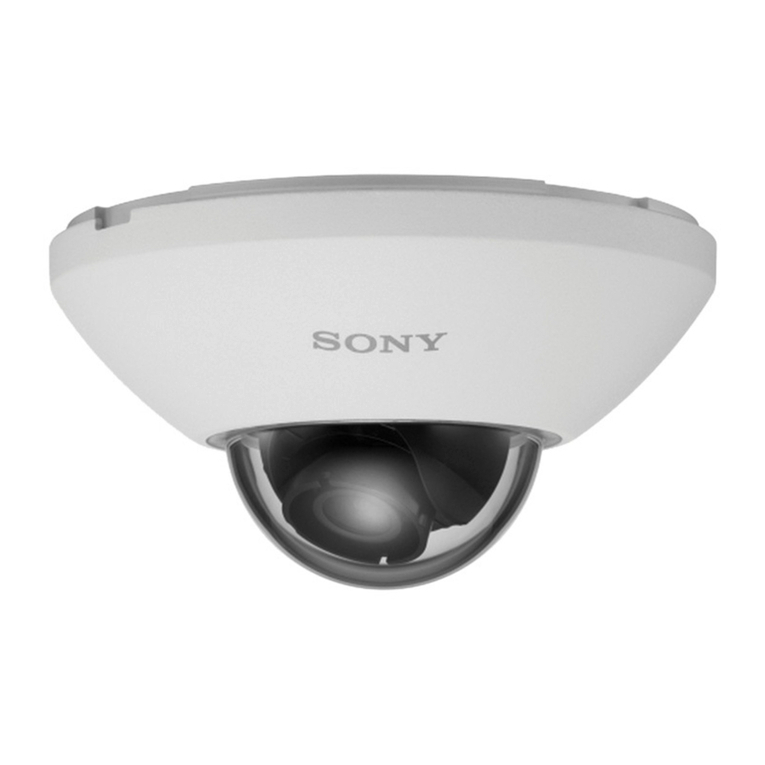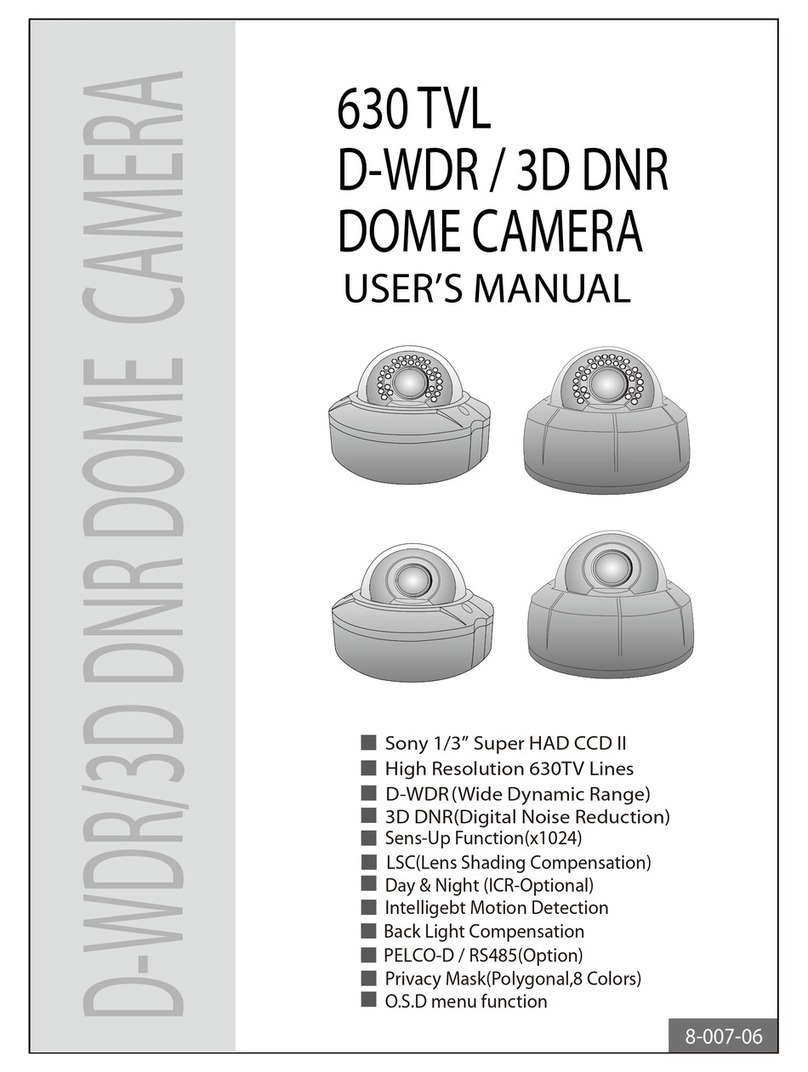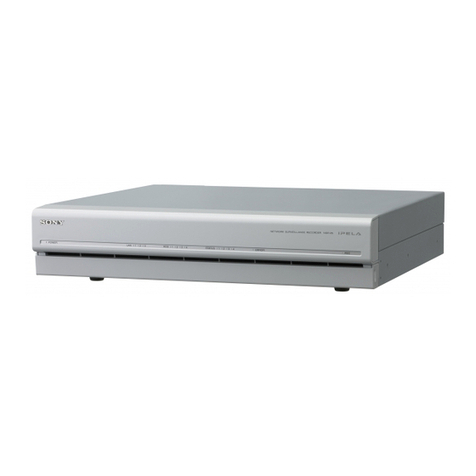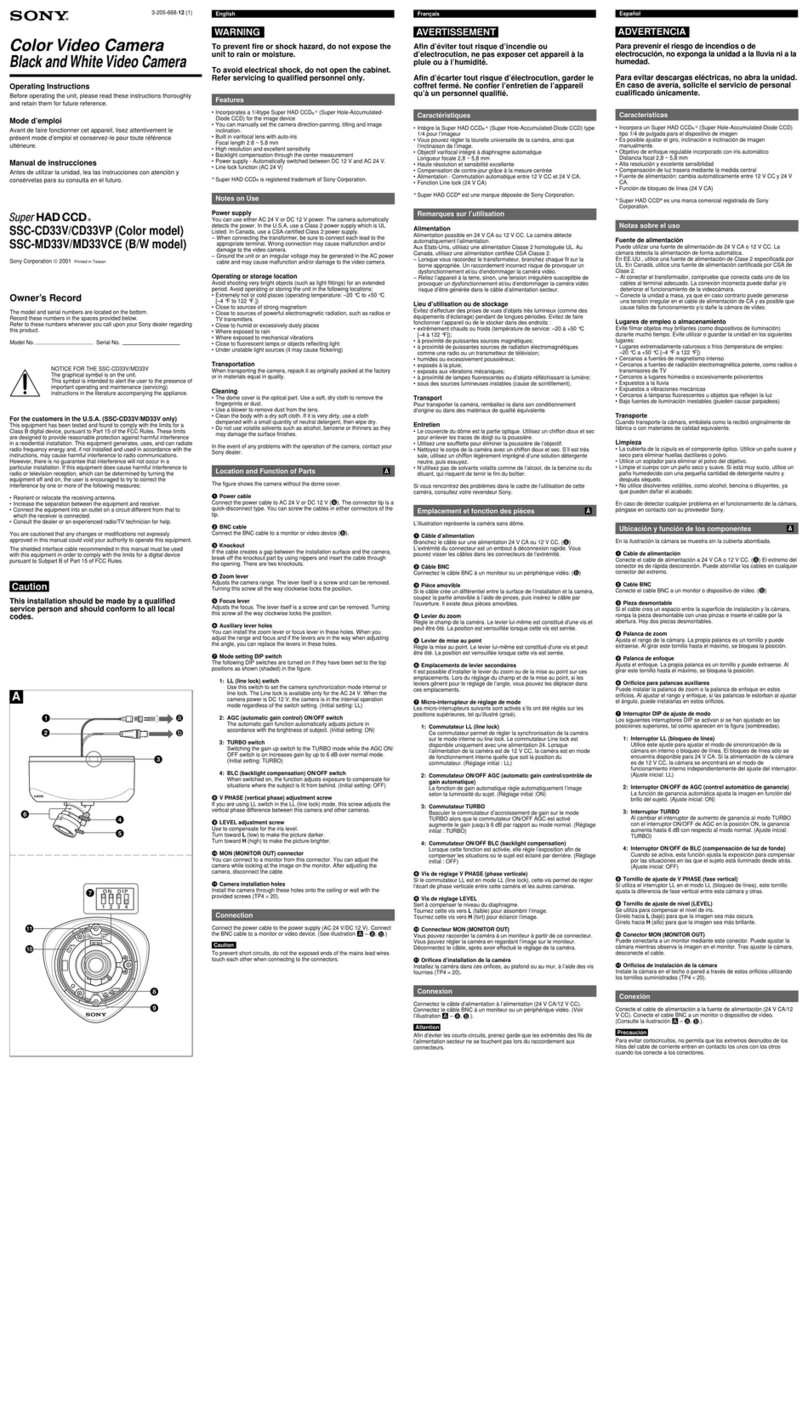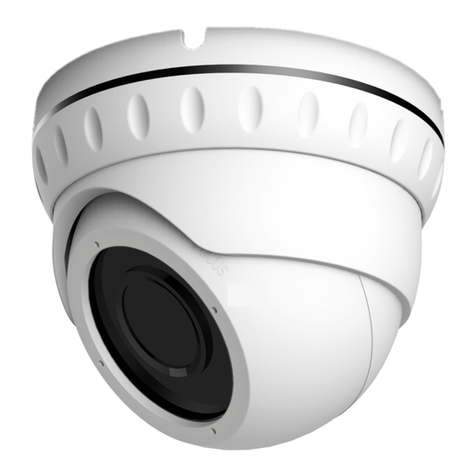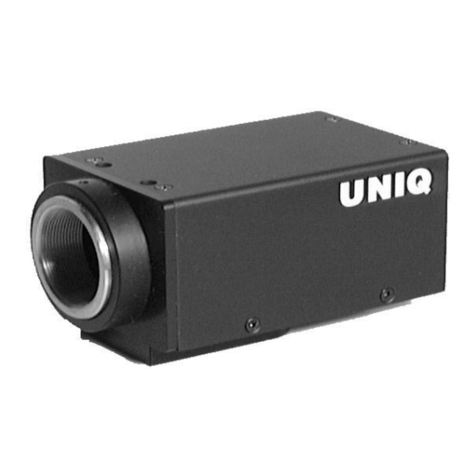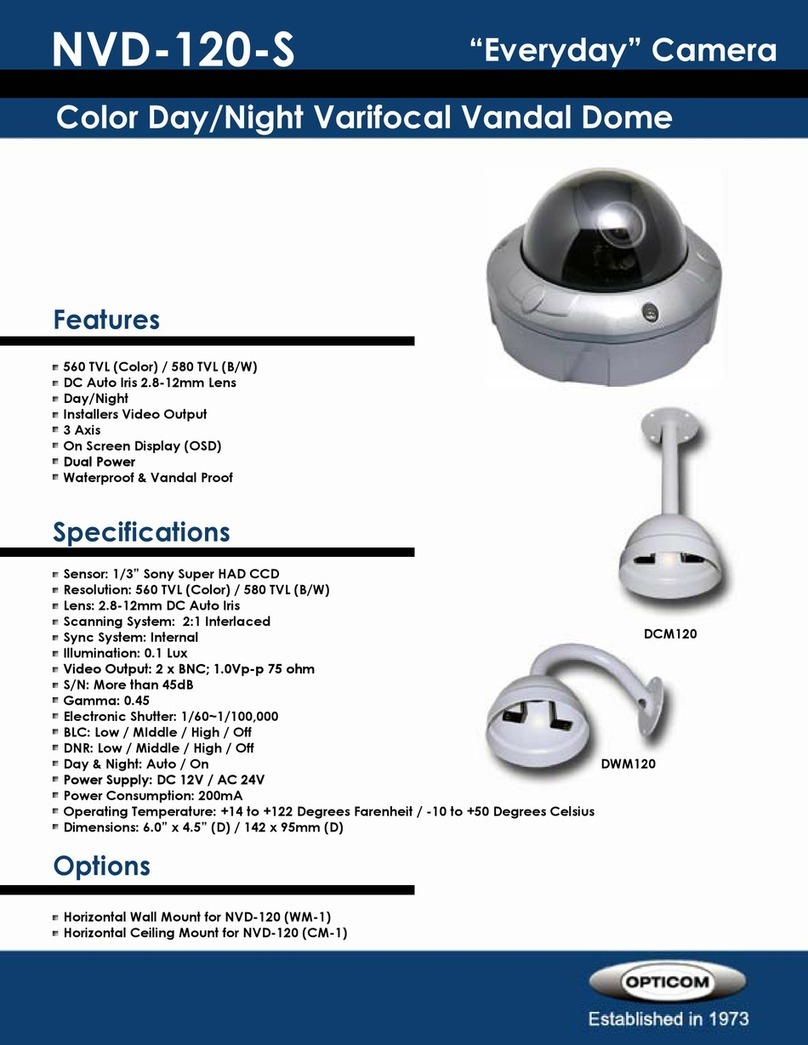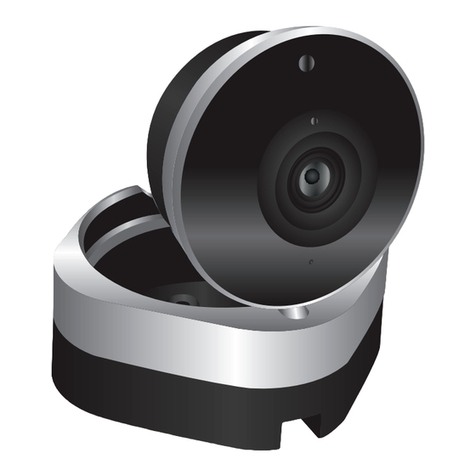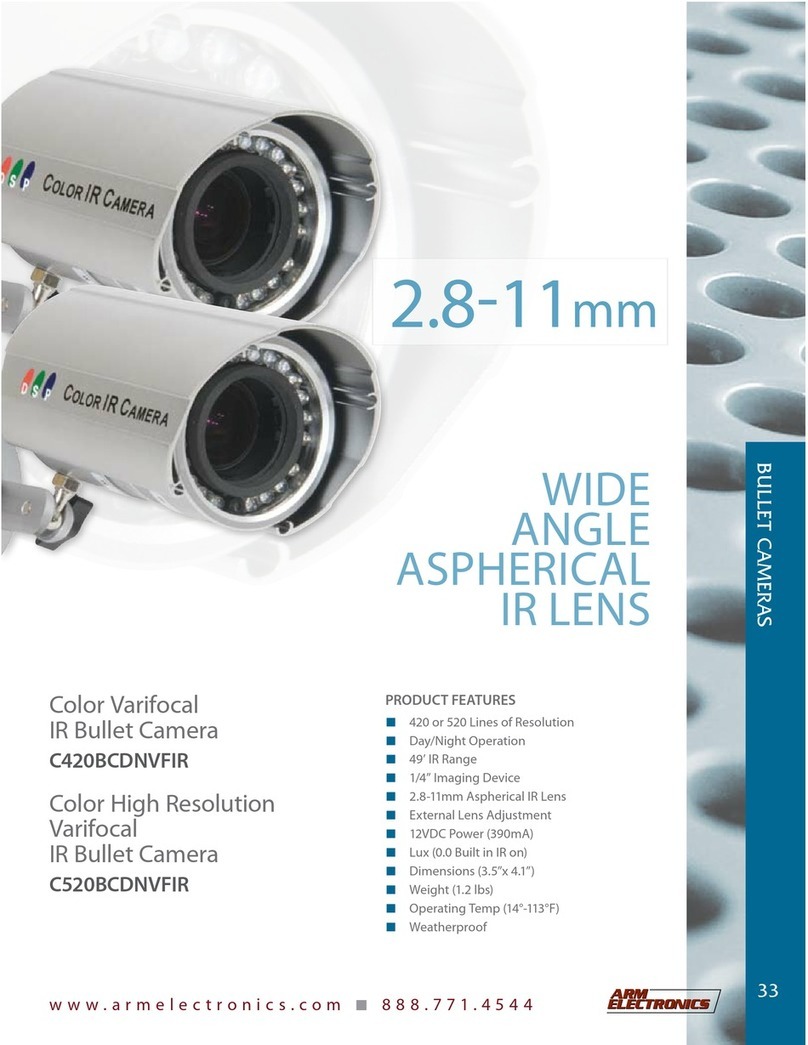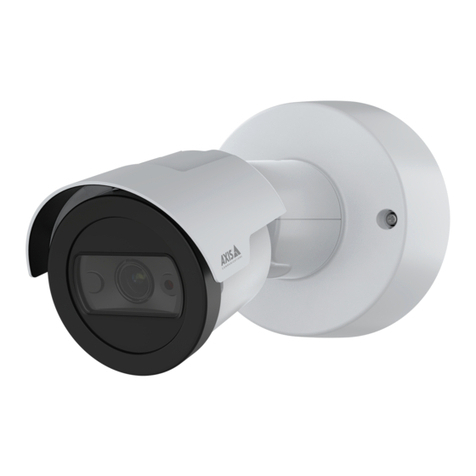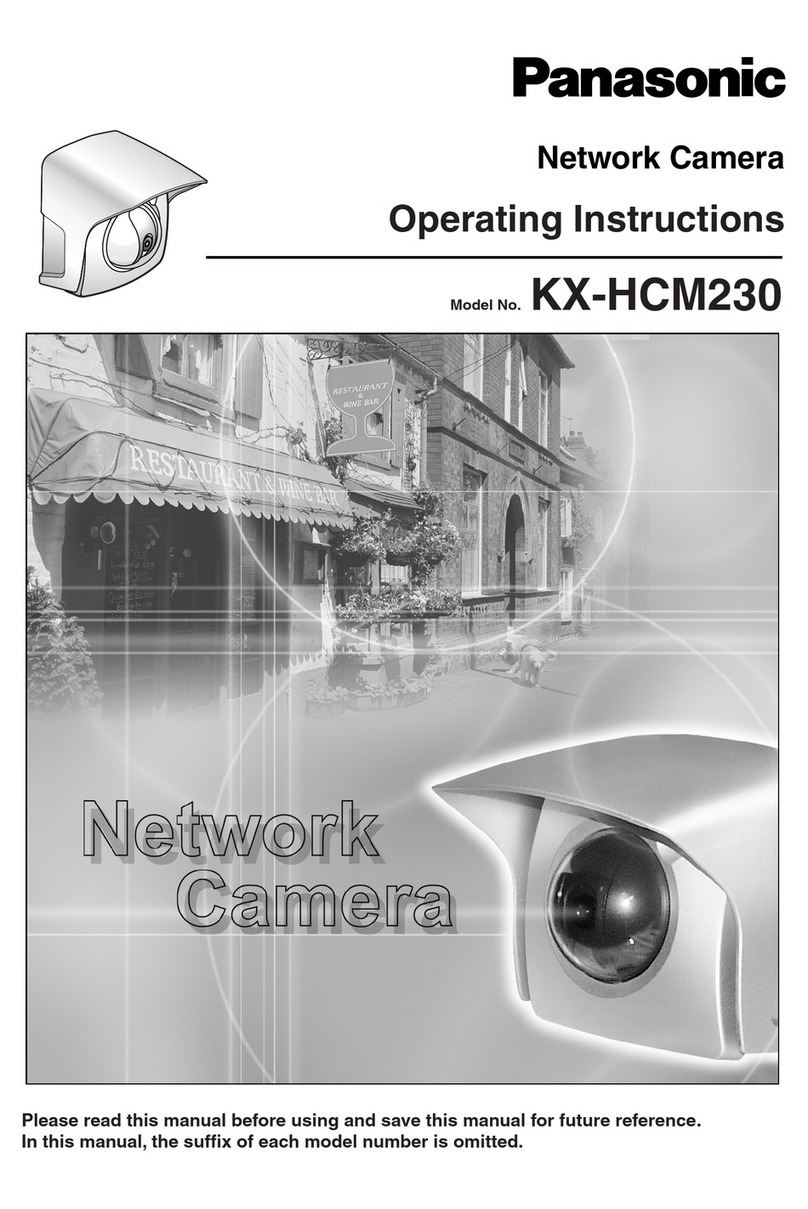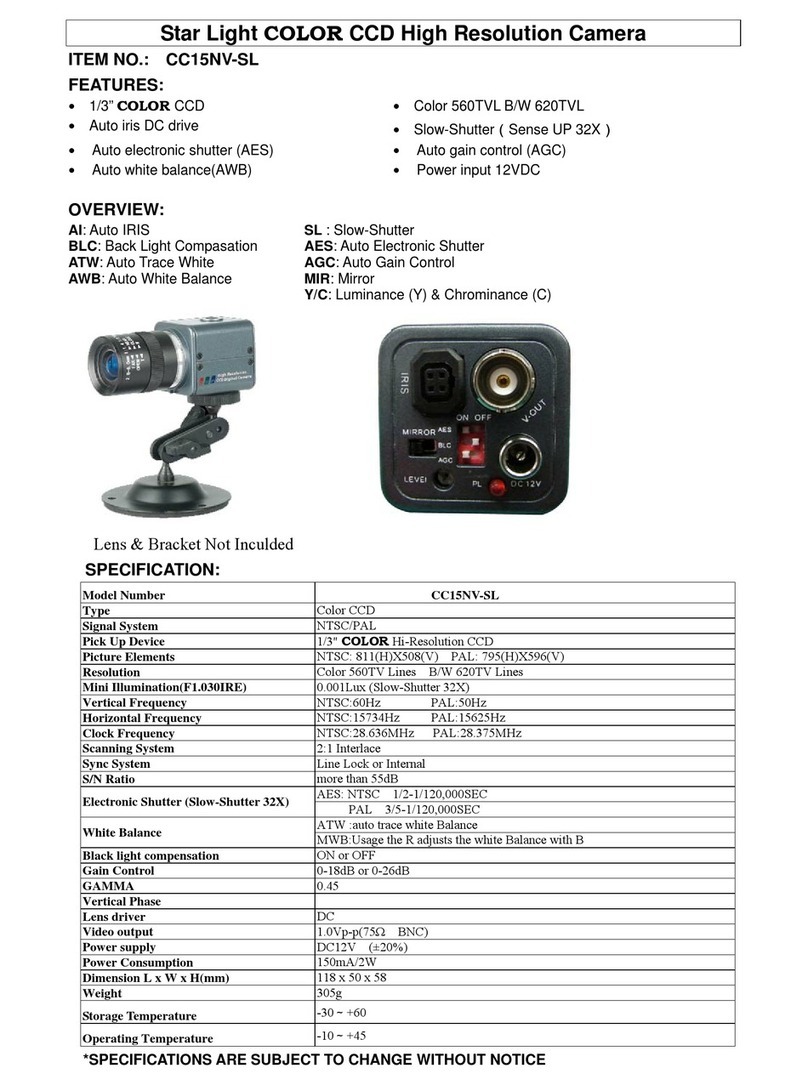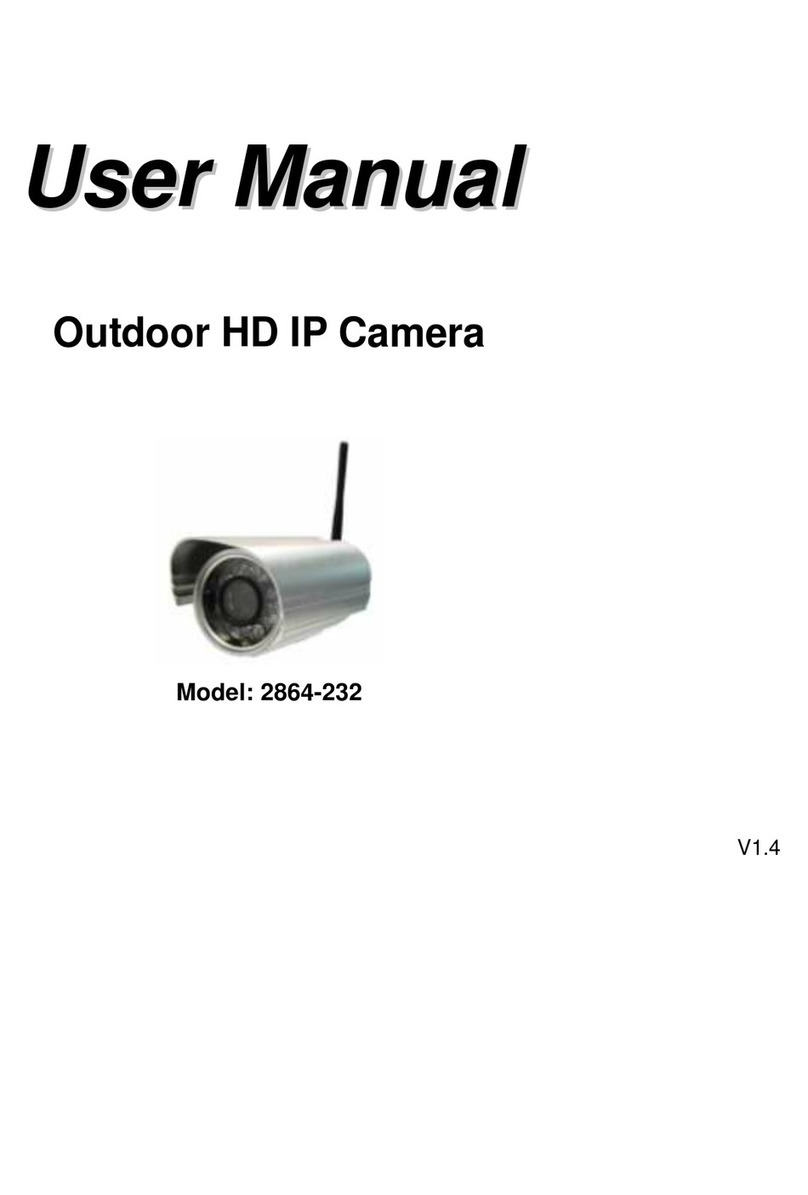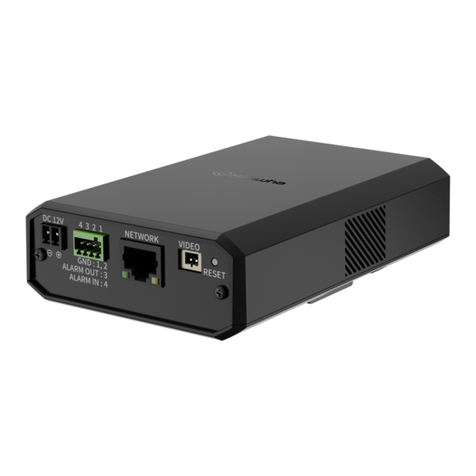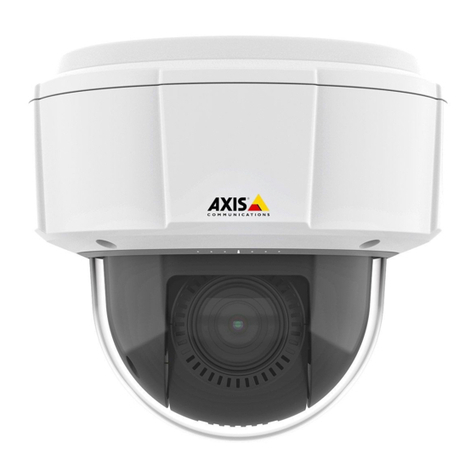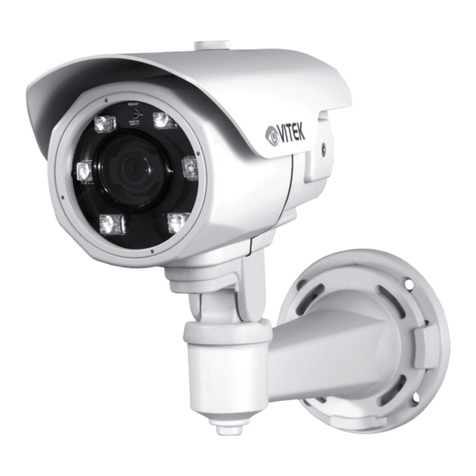
6
Overview
XC-HR58
Rear Panel
Note
Be sure to turn the power off before making switch
settings.
1VIDEO OUT/DC IN/SYNC (video output/DC
power/sync input signal) connector (12-pin
connector)
Connect a CCXC-12P05N camera cable to this
connector to obtain power from the +12V DC power
supply and also to enable video signal output from the
camera module. When a sync signal generator is
connected to this connector, the camera module is
synchronized with the external sync signals (HD/VD
signals).
For more information, see “VIDEO OUT/DC IN/SYNC
connector pin assignments” (page 7).
2Shutter speed/Mode setting DIP switch
1Shutter speed (bits 1-4)
Set an appropriate shutter speed (factory setting:
OFF).
2High-rate scan mode switch (bit 5)
The factory setting of this switch is high-rate
scan OFF. If you turn this switch ON to use
high-rate scan mode, you also need to make the
external VD pulse rate and width settings.
For more information, see “To Use High-rate Scan
Mode (A) (page 14)” or “To Use High-rate Scan
Mode (B)” (page 18).
3Restart reset/External trigger shutter mode
switch (bits 6 to 8)
By inputting an external restart/reset signal, you
can capture the information of single screens at
arbitrary timing. By inputting an external trigger
signal, you can capture imaging information on
fast-moving objects at a precise moment in
time. The factory settings for these switches are
for normal operation (restart/reset and external
trigger shutter OFF).
For more information, see “Restart/Reset” (page 13)
and “External Trigger Shutter” (page 16).
4Gain switch (bit 9)
This switch selects FIX (fixed) or MANUAL
(manual adjustment) (factory setting: FIX (left
side)).
5Binning mode switch (bit 0)
Switches the video signal output mode between
binning OFF and binning ON (factory setting:
OFF).
For more information, see “Video Output Modes”
(page 10).
3HD/VD signal input/output switch
Set the switch to INT to output HD/VD signals from
the camera module.
Set the switch to EXT to input HD/VD signals from an
external unit (factory setting: EXT).
Note
Even when the switch is set to EXT, the camera
module operates in internal synchronization mode
when no external HD signal is input. In this case,
however, the camera module will not output internal
sync signals.
4M GAIN (Manual Gain) control knob
If you have selected MANUAL (manual adjustment)
with DIP switch 4, this knob adjusts the gain.
575Ωtermination switch
Turn this to OFF when not terminating the external
sync signal (factory setting: ON).
1VIDEO OUT/DC IN/SYNC connector
2Shutter speed / mode setting DIP switches
3HD/VD signal input/output switch
4M GAIN control knob
575Ωtermination switch
1
2
3
4
5
